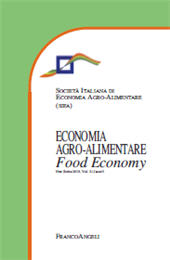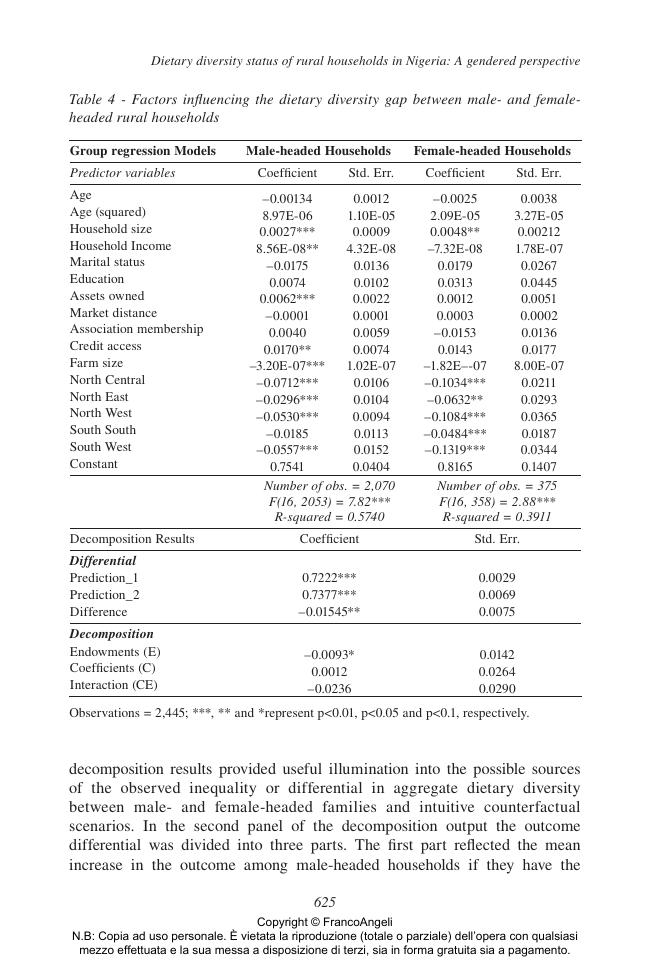Dietary diversity status of rural households in Nigeria : a gendered perspective
613-636 p.
Evidence of upsurge in food insecurity incidence and its vulnerability of households in both rural and urban areas in Nigeria has led to enquiries about the richness of available food baskets and evenness of their consumption. The objective of this study was to examine the dietary diversity among rural households in Nigeria from a gender perspective. Data from the Living Standard Measurement Survey- Integrated Survey on Agriculture (lsms-isa) 2016 were analysed using Simpson Diversity Index, Cross tabulation and Oaxaca-Blinder decomposition. Most of the rural households were male-headed (85%) with an average age of 53 years old and had household size of 8 persons. Dietary diversity score was slightly higher in female-headed households than among their male counterparts.
Fish and seafood had the highest food share expenditure among female-headed households while cereals had the highest in male-headed households. Low dietary diversity was predominant among households where the head was 31 to 40 years old male with at least 16 members, while the high dietary diversity was highest among households with 51 to 60 years old female heads and 11 to 15 members. Difference in mean of aggregate dietary diversity between male- and female-headed households revealed a gap of 0.0155 in favour of the female-headed households. There were significant gender differences in household endowments such as household size, income, tangible assets owned and farm size, which explained dietary diversity among rural households in Nigeria. [Publisher's text].
Is part of
Economia agro-alimentare : XXI, 3, 2019-
Articles from the same issue (available individually)
-
Information
ISSN: 1972-4802
KEYWORDS
- Dietary diversity, Simpson Index, gender, rural Nigeria



